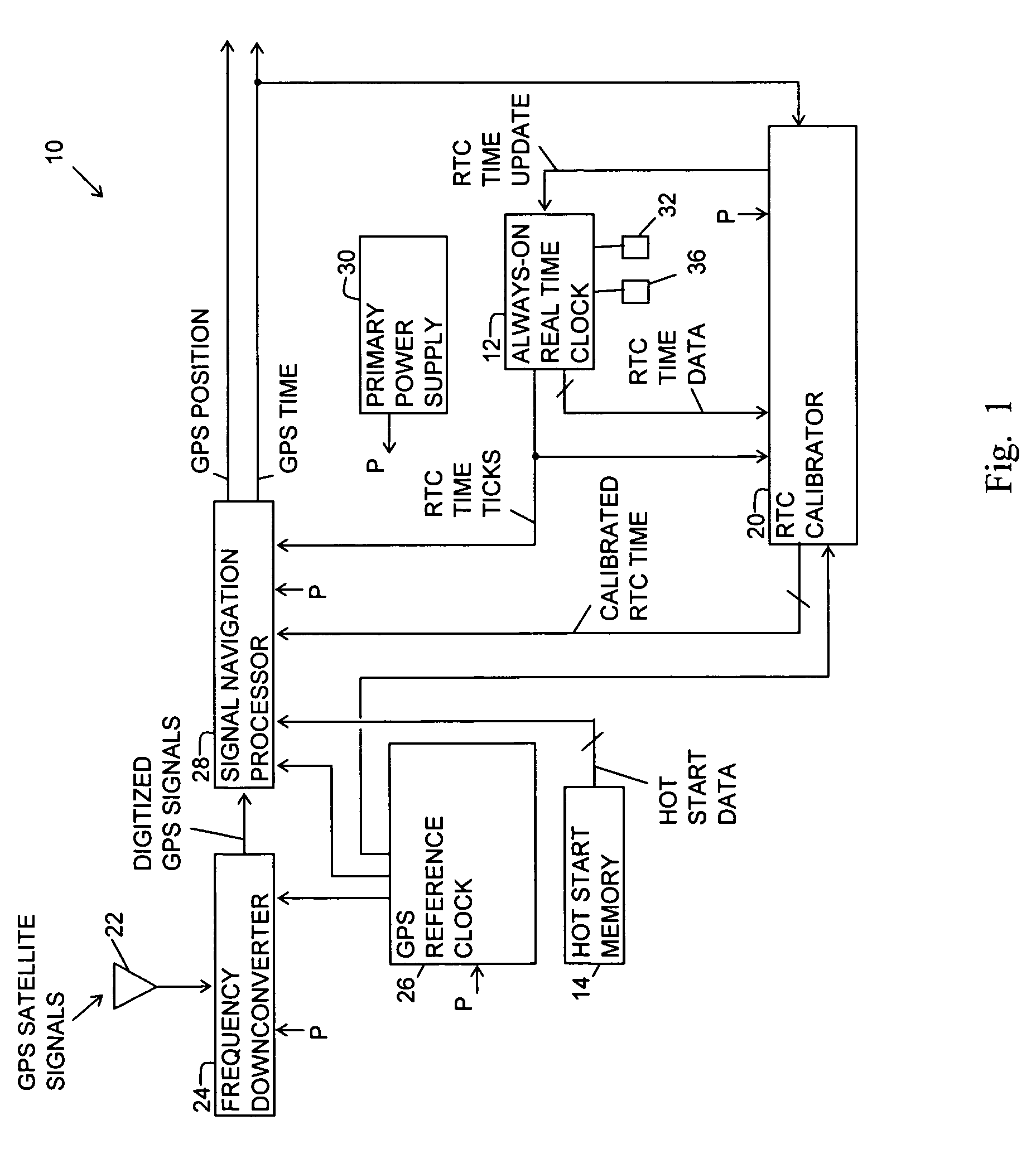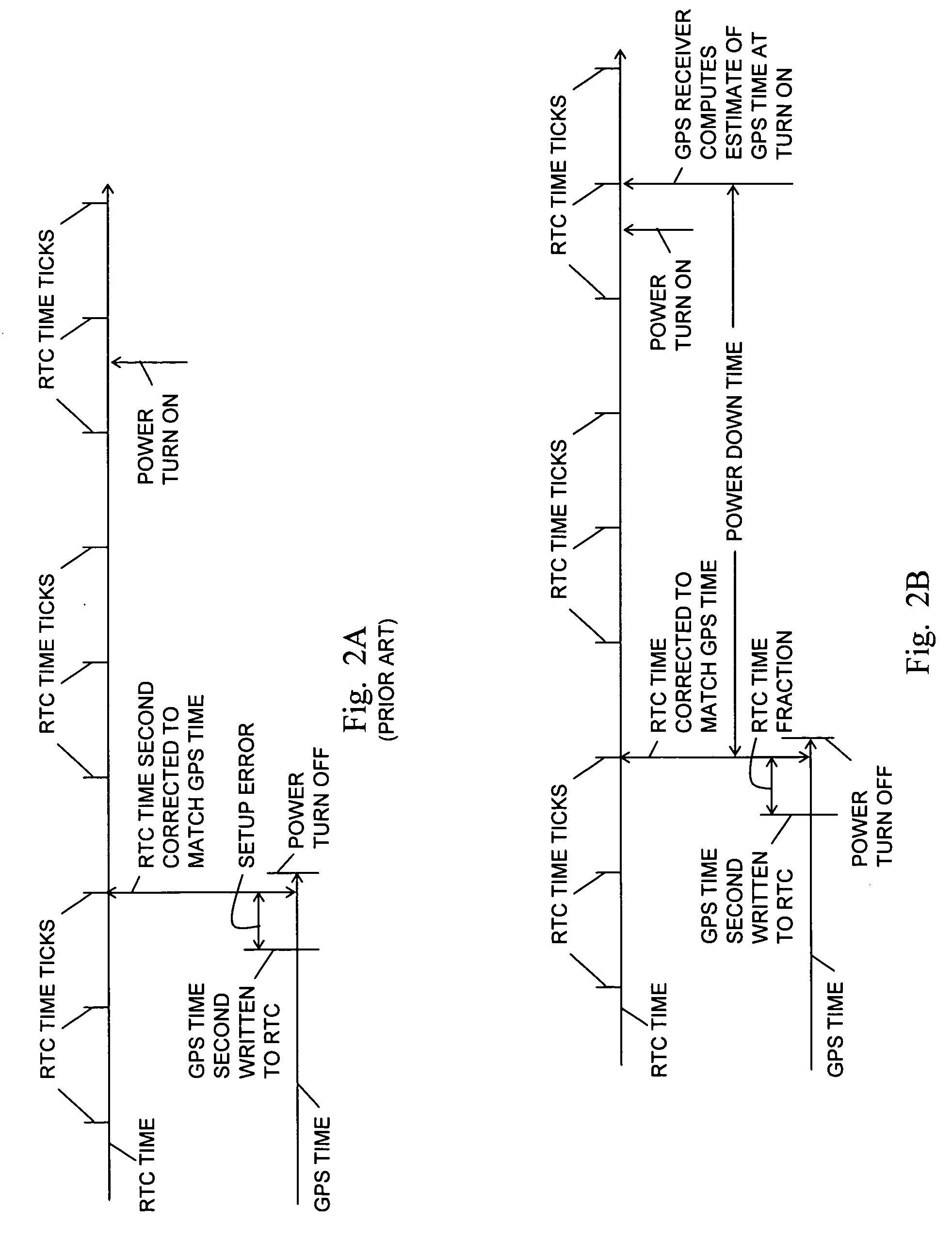Fast time to first fix by calibration of a real time clock
a real-time clock and fast time technology, applied in satellite radio beaconing, measurement devices, instruments, etc., can solve the problems of insufficient energy available in the gps signal, inability to accurately time the bit transition, and the gps receiver needs a fast time. to achieve the effect of fast time to first fix
- Summary
- Abstract
- Description
- Claims
- Application Information
AI Technical Summary
Benefits of technology
Problems solved by technology
Method used
Image
Examples
Embodiment Construction
[0030]The details of preferred embodiments for carrying out the ideas of the invention will now be presented. It should be understood that it is not necessary to embody all of these details in order to carry out the ideas of the invention. Several subsets and numerous alternatives, modifications and equivalents of the embodiments described below will undoubtedly be apparent to someone skilled in the art after reading these details as within the scope of the idea of this invention. The description of these details is not intended to eliminate these subsets, alternatives, modifications and equivalents from the basic idea of the invention that is presented below in the claims.
[0031]The invention is described in terms of a best mode that uses global positioning system (GPS) signals modulated with a coarse / acquisition (C / A) spreading code. However, the idea of the invention may be applied with other GPS signal codes. Further, the invention may be carried out with a generic global navigat...
PUM
 Login to View More
Login to View More Abstract
Description
Claims
Application Information
 Login to View More
Login to View More - R&D
- Intellectual Property
- Life Sciences
- Materials
- Tech Scout
- Unparalleled Data Quality
- Higher Quality Content
- 60% Fewer Hallucinations
Browse by: Latest US Patents, China's latest patents, Technical Efficacy Thesaurus, Application Domain, Technology Topic, Popular Technical Reports.
© 2025 PatSnap. All rights reserved.Legal|Privacy policy|Modern Slavery Act Transparency Statement|Sitemap|About US| Contact US: help@patsnap.com



